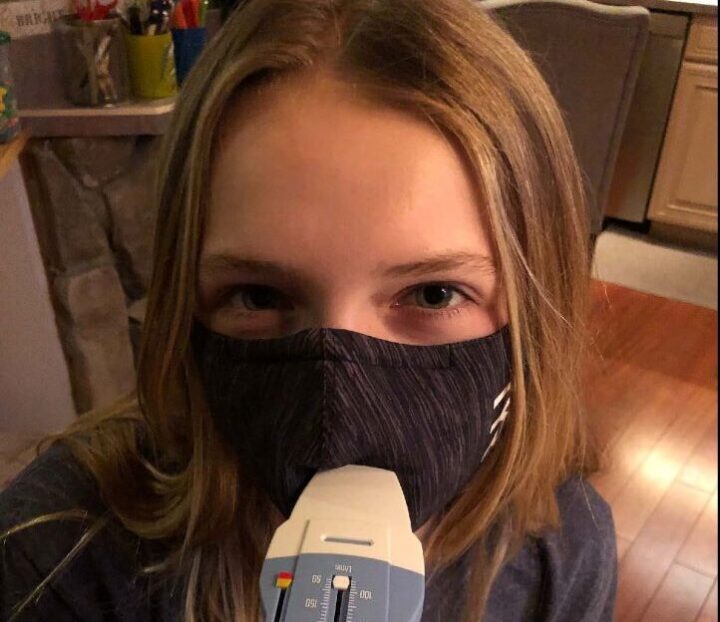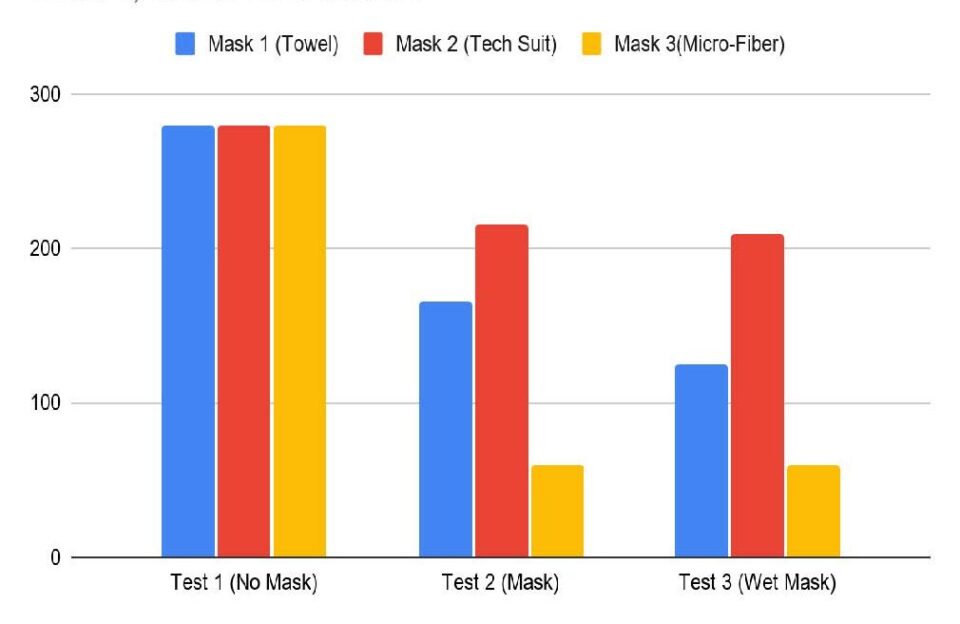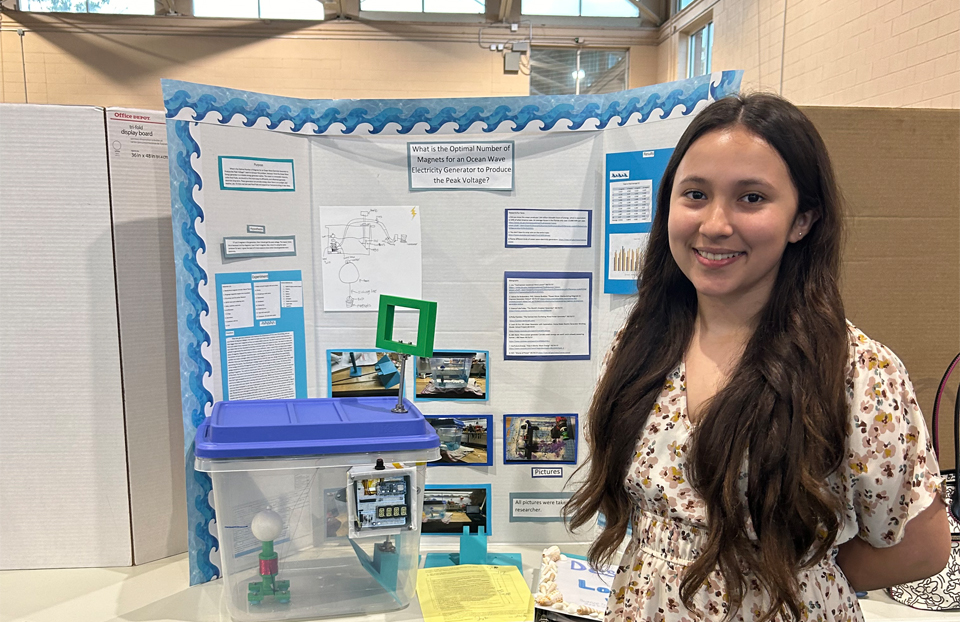One student aims to keep swimmers safe during the coronavirus pandemic

Face masks have become a regular part of our everyday lives during the coronavirus pandemic. For many athletes and gym-goers, wearing a face mask has been a way to keep them safe while keeping them active, but presents challenges and inhibits performance.
Swimming has been generally accepted by public health officials to be a safe activity during the pandemic since experts agree that it is extremely unlikely for the virus to be transmitted by water. (According to the CDC, wearing a mask is essential in most settings, but wearing a mask is not generally effective in a pool. Here are more guidelines from the CDC.) However, one of the challenges presented in swimming is when face masks get wet right after exiting the water; wet masks are less effective at preventing the spread of the virus and makes it harder to breathe.
Being a swimmer herself, eighth grader, Anna Kilponen from Kinnelon, New Jersey, aimed to find a practical solution by developing a water-resistant face mask.
The CDC recommends swimmers keep a face mask on anytime they aren’t actively in the water. This includes wearing a face mask until the moment they enter the water and immediately after they exit the water. When a swimmer replaces their face mask after a swim, it gets wet, decreasing its effectiveness and making it harder to breathe. “When single-use surgical masks get wet, they ‘fall apart’,” said Neysa Ernst, nurse manager of the Biocontainment Unit at Johns Hopkins Medicine, in an interview with The Seattle Times.

Knowing she would need a material that could withstand getting wet, while remaining effective and easy to breathe in, Anna tested three different materials: a bath towel, a microfiber towel and a swimmer’s tech suit. Once each material was sewn into a mask, Anna tested which mask was easiest to breathe through when dry and wet.
Using a Lung Performance Peak Flow Meter, Anna first measured her breathing without a face mask to establish a base number. She then measured her air flow in liters per minute (lpm) when breathing through each mask while dry. After recording that data, Anna used a spray bottle to make each mask wet, simulating what it is like to put a mask on after swimming and recorded her air flow while wearing the damp masks. She repeated the process three times, to ensure accuracy.

Comparing her findings to her baseline air flow of 280 lpm, Anna determined the tech suit with 215 lpm of air flow when dry, and 210 lpm when wet was the best material for a water-resistant face mask. The bath towel measured 165 lpm when dry and 125 lpm when wet, while the microfiber towel measured 60 lpm while both dry and wet.
“The tech suit material is lightweight and made to resist water,” said Anna. “It was able to stay relatively dry even after being sprayed with the water bottle and still allowed me to be able to breathe almost as well as I do when I’m not wearing a mask at all.”
In the future, Anna hopes to test the mask on a wide range of swimmers and make the mask more accessible to people in the sport. She says it was important to her to create something that would keep swimmers safe during the coronavirus pandemic and she enjoyed working with one of her swim coaches to test her prototypes.
Anna received the Lemelson Early Inventor Prize for her work at the Pearl R. Miller Middle School Science Fair in Kinnelon, New Jersey. “Since I was a little girl, I have always wanted to be a pediatrician and receiving an honor like this in the science field can only help me on my track to becoming a doctor. I invented something that I was passionate about and it was an honor to receive this award because of that invention.”


